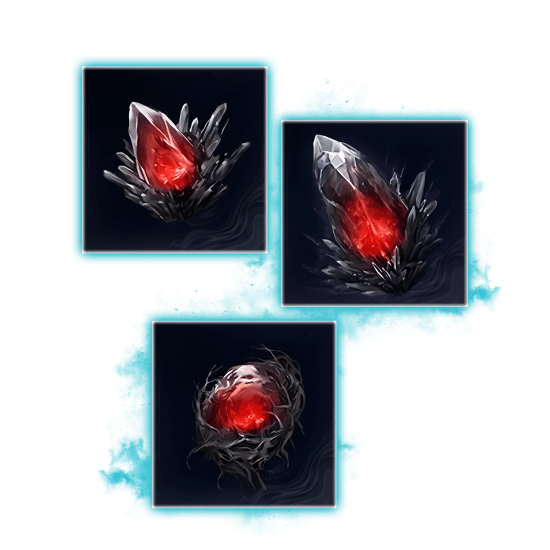This Elden Ring Nightreign Executor guide explores one of the most lethal and skill-intensive characters in the game. Executor doesn’t overwhelm with brute strength or elemental trickery — instead, he demands timing, patience, and precision. Designed for players who thrive under pressure, his style revolves around calculated deflections, deadly counters, and mastering opportunities few other classes can even see. In this ERN Executor guide, we’ll show you why his high ceiling makes him one of the most rewarding nightfarers to learn — and one of the deadliest to face.
If you'd like to get some more Murk currency and start off your expeditions a bit more prepared, you can Buy Nightreign Murk at SkyCoach. Just select the amount of Murk you want, and your platform. Our veteran players will deliver the order promptly!
Note: At SkyCoach, you can Buy Elden Ring Nightreign Boost at the best prices with fast delivery. Use our special PROMO CODE (in green) hidden in this article for a 20% DISCOUNT.
Executor Overview

This Elden Ring: Nightreign Executor overview introduces one of the game’s most demanding and rewarding Nightfarers — a katana-wielding duelist who turns patience and precision into lethal momentum. Inspired heavily by Sekiro’s deflection mechanics, Executor plays a mental game of rhythm and intent. He doesn’t win by pressing harder — he wins by reading better.
Executor isn’t built for brute strength or wide control. His strength lies in anticipation: watching the cadence of an enemy’s assault and using his spectral weapon, Suncatcher, to deflect attacks and open brutal counter opportunities. It’s a high-wire act — one wrong read can break your stance — but the right one ends the fight in seconds.
Mastery of Executor demands more than timing. It demands composure. His signature ability locks him into a walking stance while active, forcing deliberate spacing and positioning. But in exchange, it offers a deflection window that’s more generous than traditional parries, letting skilled players maintain pressure without relying on perfect-frame reactions.
While he struggles when mobbed without support, Executor is far from helpless in group fights. His Ultimate Art, Aspects of the Crucible: Beast, gives him the burst, reach, and healing to flip dangerous engagements. And in coordinated parties, he can anchor the frontline — parrying key threats, reviving allies, and drawing attention while his team controls the field.
Visually, Executor embodies judgment. Encased in tarnished bronze, he advances with steady intent. Every strike is measured. Every deflection, earned. And every mistake — yours or the enemy’s — becomes a pivot point. You won’t overpower the world with him. You’ll outthink it.
For players who value mechanical precision, calculated risks, and deep combat mastery, Executor isn’t just a class — he’s a proving ground.
Executor Pros and Cons
The Executor is built for players who don’t just react — they study. He thrives on anticipation, reading enemy behavior, and turning near-death situations into lethal punishments. His kit is designed around deflection, timing, and exact execution, making him a deadly pick in the hands of a skilled player. He’s not built for beginners or chaotic encounters — but for controlled, confident duels. So, what are the Elden Ring Nightreign Executor pros and cons? Let’s take a look:
Pros:
- Unmatched Counterplay – Executor’s kit revolves around Suncatcher, a spectral weapon stance that deflects incoming attacks. A well-timed deflect doesn’t just deny damage — it flips the fight. With proper use, you can shut down even elite enemies and bosses in seconds.
- Built-In Momentum Shifts – Every successful deflect builds toward a charged slash, which can be stored and unleashed later. This mechanic lets you bank your advantage, punish precisely, and maintain control without overextending.
- High Pressure in Duels and Boss Fights – Against lone enemies or bosses with readable patterns, Executor becomes suffocating. His ability to control spacing and punish with ruthless efficiency makes him a top-tier duelist in late-game encounters. Bosses with telegraphed patterns are especially vulnerable.
Cons:
- Weak Crowd Control – Executor lacks natural AoE tools. While his Ultimate form, Aspects of the Crucible: Beast, offers some crowd control, he’s still vulnerable to swarm tactics and chaotic skirmishes — especially if his parries miss or whiff.
- No Room for Error – Executor isn’t a tank. He has decent stamina and HP, but few defensive tools beyond deflection. If you mistime a deflect or get staggered in Suncatcher mode, you’re exposed — and he can’t trade hits like Raider or Guardian.
- Steep Learning Curve – Mastery isn’t optional. You need to learn attack patterns, manage timing, and stay calm under fire. He’s not forgiving — and that makes him a punishing choice for new players or for blind runs in unfamiliar zones.
There’s a good number of PvP players in Soulslike games whose style is built around parrying followed by a lethal strike that deals a massive amount of damage. These are the kind of players who will enjoy Executor the most.
Executor Abilities
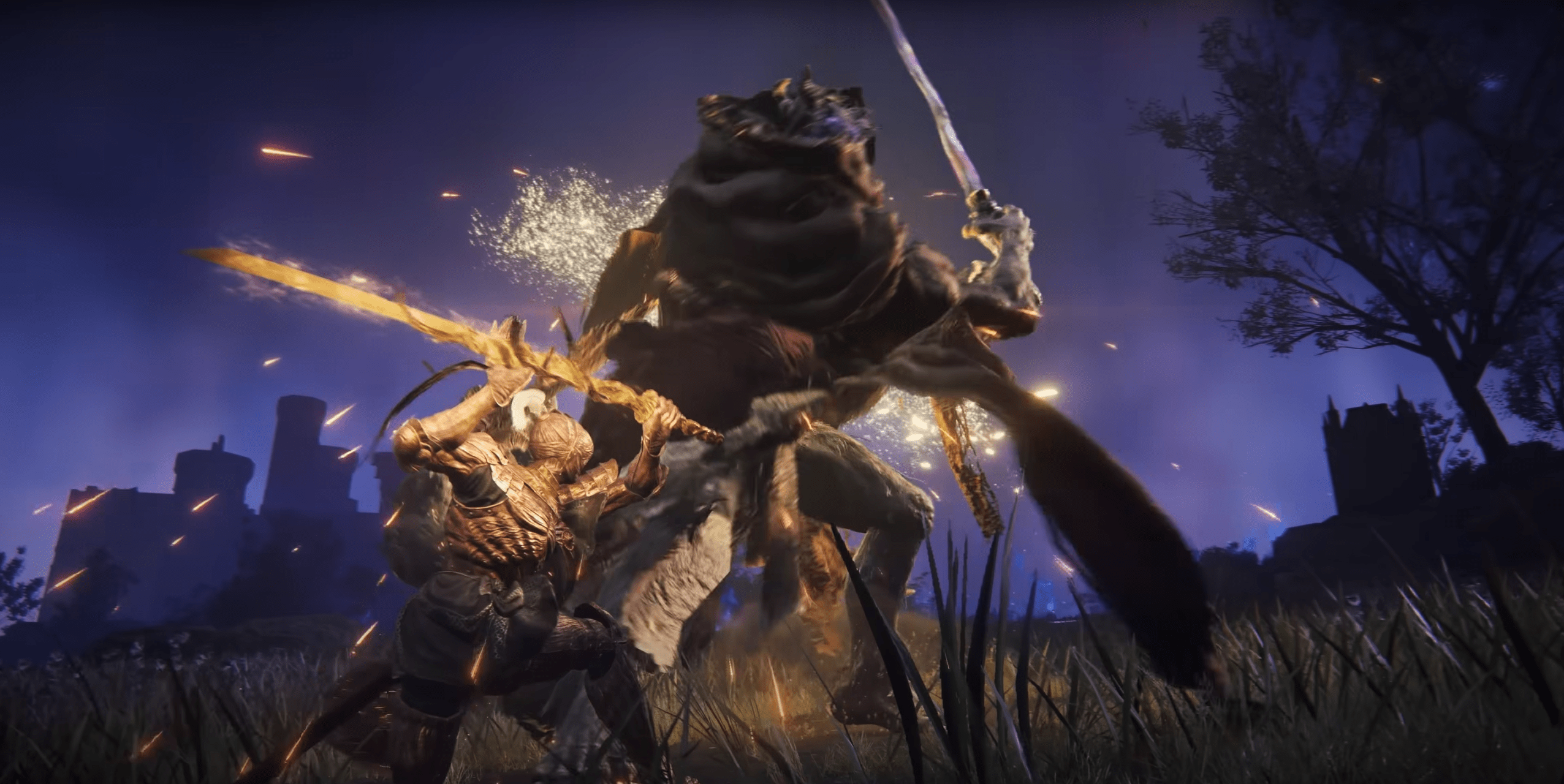
The Elden Ring Nightreign Executor abilities are built entirely around reaction, precision, and punishing mistakes. Unlike other Nightfarers who deal damage through pressure or sustain, Executor’s kit is about creating high-stakes openings through perfect reads. With a parry-based skill, a reactive passive, and a transformative ultimate, his abilities demand commitment — and reward mastery. BLOG20
| Ability Type | Icon | Name | Description |
| Passive Ability |  |
Tenacity | Gain a temporary boost to attack power (~20%) and stamina recovery for ~20 seconds after receiving or cleansing a status effect. Can be exploited with bleed/rot/poison setups but isn’t always reliable without intentional triggers. |
| Character Skill |  |
Suncatcher | Enter a slow-movement stance to deflect incoming attacks. Deflections are easy to time and build energy toward a powerful charged slash (after 4 successful deflects). Slash can be stored and unleashed later. Enables advanced techniques like switch-parrying. |
| Ultimate Art |  |
Aspects of the Crucible: Beast | Transform into a primordial beast, fully restoring health and gaining access to powerful melee combos and a roar that can revive allies at range. A finishing AoE slash ends the form early and should be used at the timer’s edge for maximum effect. |
Executor’s toolkit is one of the most focused in Nightreign. Suncatcher alone can carry fights if used correctly, but it demands flawless reads. His passive, Tenacity, plays into the tension of his role — turning punishment into pressure. And when things spiral, Aspects of the Crucible: Beast gives him the burst and mobility to claw back momentum in chaotic fights.
We’ll dive deeper into timing, spacing, and counterplay later in the guide.
Executor Gear
The Elden Ring Nightreign Executor gear is tightly focused: fast weapons, sharp timing, and punishing counterattacks. From the start, Executor is equipped for close-quarters combat with a katana that encourages precise strikes and aggressive deflection windows. While he lacks the brute force of classes like Raider or Guardian, his kit thrives when paired with gear that supports his reactive, high-risk approach.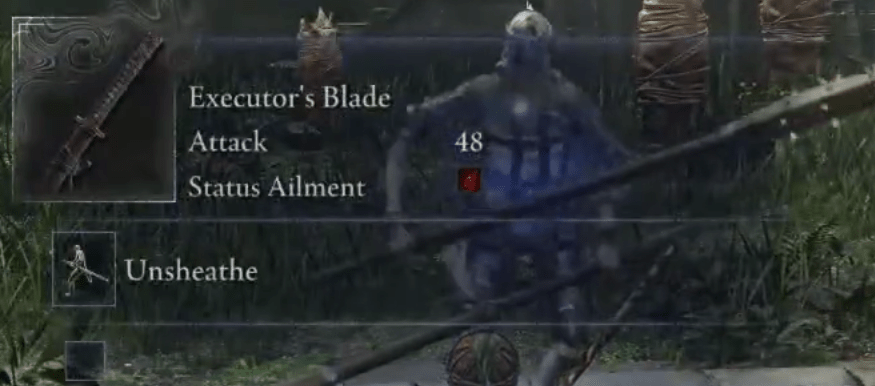
Starting Equipment:
- Executor’s Blade – A curved katana with innate bleed buildup and fast animation speed. Great in the opening hours, especially for chaining light attacks into parries. However, its damage and utility taper off later in the run, and most players replace it once they acquire stronger Dex/Arcane-scaling blades.
Executor isn’t about raw numbers. He benefits most from gear that creates opportunities — weapons with status effects, fast recovery frames, and built-in parry tools. Below are some standout choices from the weapon pool that align with his strengths:
Recommended Weapons for Executor:
- Uchigatana – Clean, fast slashes and innate bleed buildup make this katana a perfect fit for Executor’s tempo. Its weapon skill (if unchanged from Elden Ring) provides additional pressure in duels.
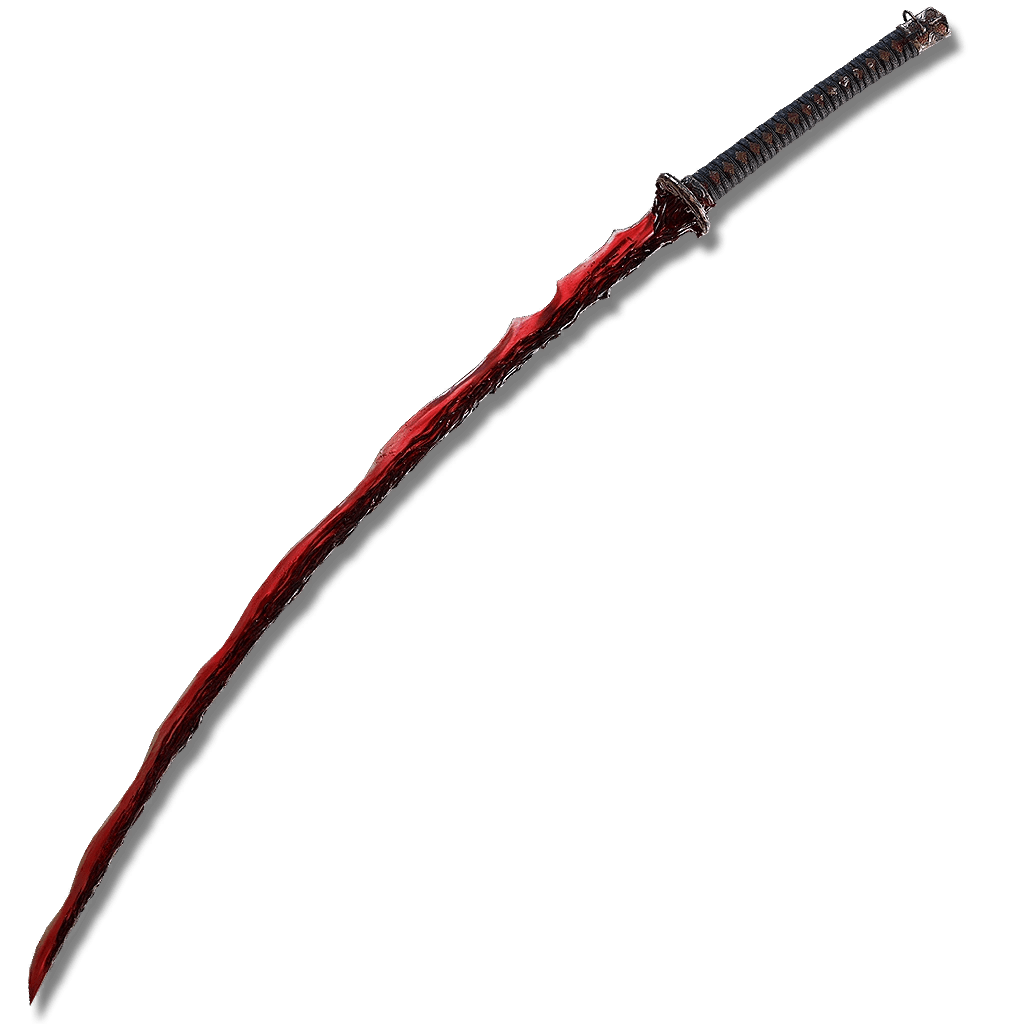 Rivers of Blood – A strong pick if it retains its bleed-centric special attacks in Nightreign. Adds ranged pressure and powerful finishers to complement his otherwise close-in style.
Rivers of Blood – A strong pick if it retains its bleed-centric special attacks in Nightreign. Adds ranged pressure and powerful finishers to complement his otherwise close-in style.- Parrying Dagger – For players who want to double down on deflecting, this offhand option boosts parry reliability and adds chip damage potential.
- Wakizashi – Can be dual-wielded with Executor’s Blade for faster combos, bleed stacking, and alternative punish windows when shields aren’t viable.
- Scorpion’s Stinger – For a status-focused build, this dagger’s deadly Scarlet Rot pairs well with Executor’s ability to quickly reset spacing and apply pressure between counters.
While heavy weapons and wide sweeps are viable for some classes, Executor performs best with precise, status-oriented tools. Prioritize weapons with innate bleed, rot, or frostbite, and be wary of slow, telegraphed options that leave you open during execution windows.
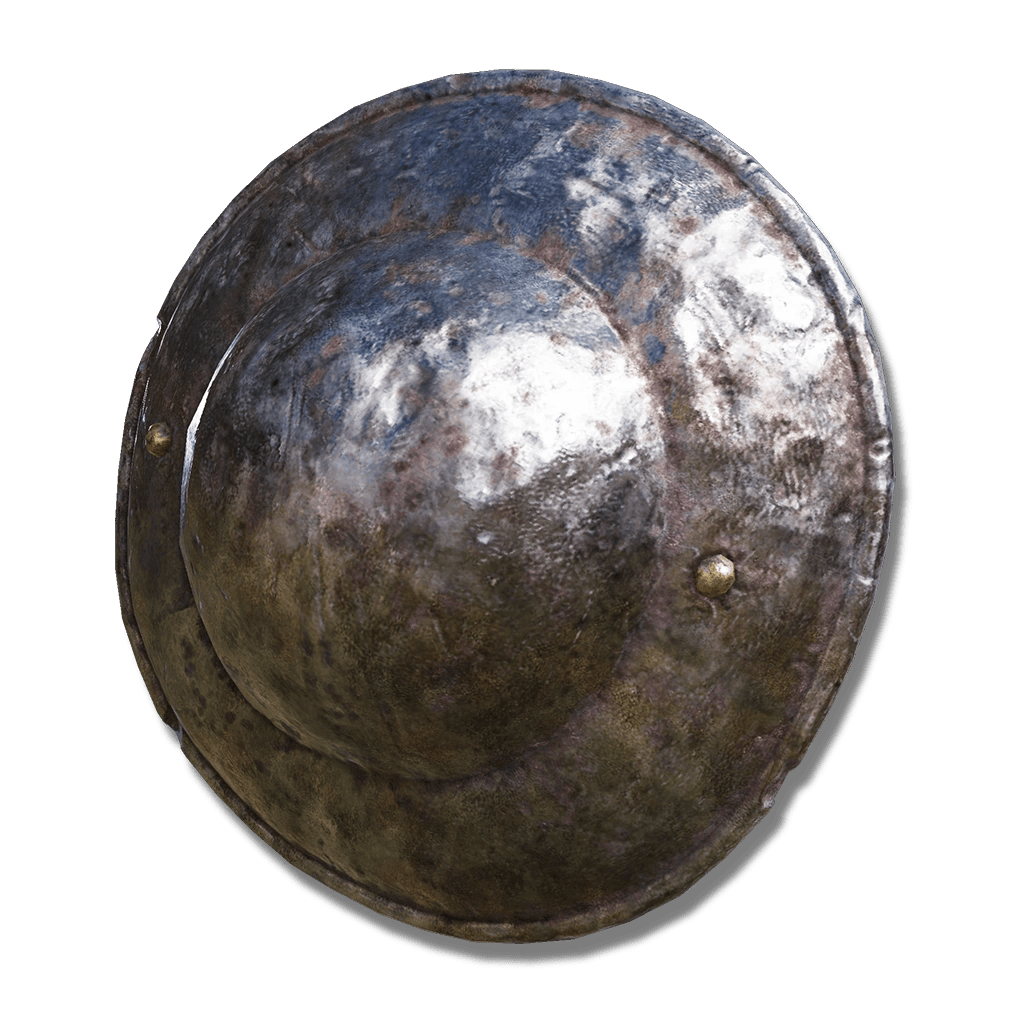 Shield Recommendations:
Shield Recommendations:
- Buckler – Small parrying shields like the Buckler or Iron Roundshield offer faster startup and recovery, perfect for high-risk defense.
- No Shield – Many experienced players will drop the shield entirely in favor of dual wielding for mix-ups and status stacking. Executor benefits from adaptability more than rigidity.
Bonus Gear Synergy
Look for relics that enhance your strengths:
- Successive Attack Boosters – Pair well with fast-hit weapons like katanas and claws.
- Bleed/Poison Scaling Bonuses – Amplify status pressure over time.
- On-Deflect Effects – Some relics restore health or stamina on successful parries or guards.
- Roar-enhancing relics – Increase AoE or add healing to Beast Form’s roar.
In short, Elden Ring Nightreign Executor weapons should complement his counterplay design. Think less about sheer output and more about controlling the rhythm of a fight — fast pokes, bleed buildup, and deflection-friendly tools define his ideal loadout.
Executor Best Build
Normally, this is where we’d highlight the Elden Ring Nightreign Executor best build — a curated setup featuring optimal weapons, relics, and stat synergy to bring out the full potential of this precision-based Nightfarer. But since Executor was only recently revealed and hasn’t been widely tested in public builds, we’re still gathering data on what gear combinations work best with his unique, parry-focused playstyle.
This section will be updated shortly after launch once we’ve had a chance to experiment across multiple runs and test high-synergy relics, viable status builds, and how Aspects of the Crucible: Beast impacts late-game viability.
How to Play Executor in Elden Ring Nightreign
To truly understand how to play Executor in Elden Ring Nightreign, you have to unlearn the standard brawler instincts and embrace a reactive, surgical rhythm. Executor isn’t about overwhelming enemies with damage or pressing the advantage nonstop — he rewards calm under pressure, sharp timing, and an almost intimate familiarity with enemy movesets. This is the ERN Executor guide's core lesson: precision is power.
Suncatcher – Mastering the Counter
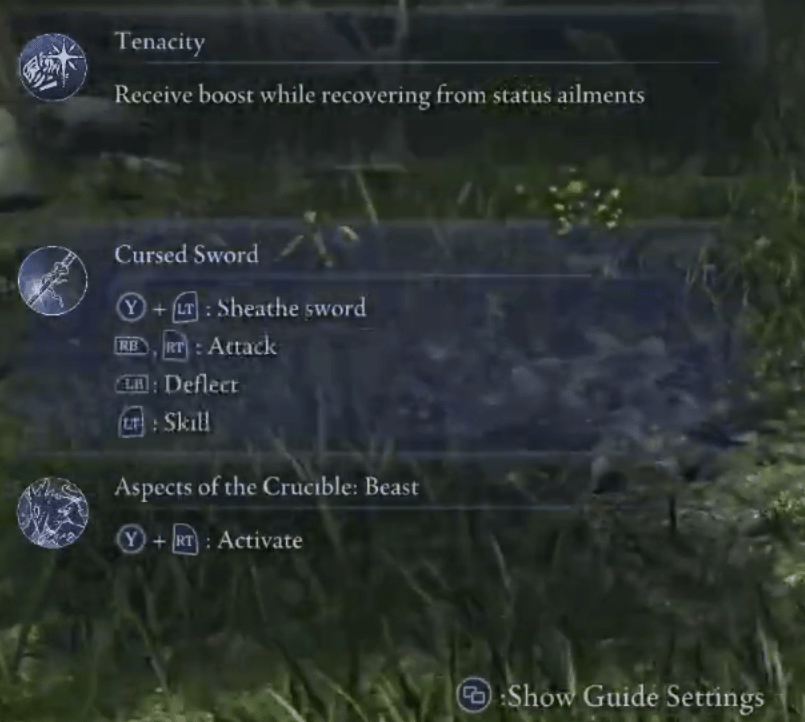
At the center of Executor’s identity is his Character Skill, Suncatcher — a conjured spectral blade that doesn’t just block attacks but deflects them. It has its own moveset, so better practice in the Roundtable Hold before going on your first expedition. BLOG20
While active, Executor moves slowly and deliberately, but the deflection window is forgiving, and with proper timing, nearly every attack in the game — even status-based ones — can be turned into an advantage.
- Deflect 4 attacks to charge a special slash that can be stored and used later.
- You can also switch-parry, activating Suncatcher mid-combat just as an attack lands to trigger a deflect on entry.
- The more familiar you are with enemy movesets, the more fluid and oppressive this becomes.
Used well, Suncatcher turns you into a duelist nightmare — not through pressure, but control.
Aspects of the Crucible – Beast Form Explained

Your Ultimate, Aspects of the Crucible: Beast, is your tempo reset. Activating it:
- Fully heals Executor instantly.
- Grants a new moveset with high-damage melee combos.
- Allows you to revive teammates at range using the beastly roar.
- Unlocks a devastating Crucible Blade AoE finisher — but using this ends the form early, so it’s best saved for the last few seconds.
Light attacks offer the best DPS, while the roar can clear scattered mobs or buy time. You also gain a temporary health buffer while transformed. Beast Form isn’t about flash — it’s your wild card, a way to punish overreach or claw your way out of a losing fight.
Tenacity – Playing Around the Passive
Executor’s Passive Ability, Tenacity, gives him a brief boost after recovering from status effects — this includes bleed, frost, rot, and more. At first glance, it seems minor, but in long engagements, it adds a rhythm to how you trade damage. Smart players will learn to bait dangerous enemies into triggering statuses, shrug them off with items or buffs, and then dive back in with enhanced performance.
Early Game Priorities
In your first runs, focus on building good habits and avoiding poor trades. Key goals include:
- Mastering Suncatcher timing — practice in solo fights or vs. elites with predictable patterns.
- Avoiding crowds — use terrain, pull enemies individually, and let others draw aggro in groups.
- Saving Beast Form for boss phases, backline pressure, or emergency heals.
- Dual-wielding status weapons — Reduvia, Nagakiba, or even claw/katana pairings help you bleed enemies fast while maintaining your mobility.
- Don’t two-hand — swapping to Suncatcher interrupts the stance, and re-entering two-hand mode mid-fight is clunky.
By Day 3, a practiced Executor becomes surgical. Fights slow down. Patterns emerge. You deflect without thinking. You counter without panic. If you can commit to reading the fight instead of rushing through it, Executor doesn’t just become viable — he becomes terrifying.
Executor Tips & Tricks
Executor rewards precision and confidence, not brute force. While he isn’t built to tank or overwhelm groups, his toolkit is lethal in the hands of a player who knows how to read the enemy and punish at the right moment. Mastery isn’t about flashy combos — it’s about momentum control, risk management, and knowing when to flip a losing fight into a win. These five Elden Ring Nightreign Executor tips will help you push his high-skill ceiling and avoid the pitfalls of parry-based play:
1. Only use Suncatcher when you’ve seen the attack before
Timing is everything. Suncatcher rewards pattern recognition, not reaction speed. Don’t gamble it on unpredictable enemies — save it for repeatable moves from elites or bosses that you’ve already studied. Every successful counter resets momentum in your favor.
2. Game your status effects to trigger Tenacity
Tenacity’s passive buff (~20% attack, faster stamina regen for 20 seconds) is strongest when timed. Let bleed, frostbite, or poison almost trigger, then cleanse to gain the bonus. You can also use Seppuku or gear with self-damage effects to activate it preemptively before big trades.
3. Don’t take on groups without setup or support
Executor is not a crowd-control class. Engaging swarms solo is a recipe for getting stagger-locked. Use terrain, chokepoints, or ally aggro to peel off enemies one by one. Reserve your Ultimate for group pressure relief — not opener damage.
4. Hold Beast Form for tempo swings — not just damage
Aspects of the Crucible: Beast fully heals you on cast, gives you i-frames, and can reset momentum. Use it when the fight is slipping, not just when your cooldown’s up. Bonus: its roar can revive allies from range — critical utility in squads.
5. Stack parry tools — Suncatcher + Parrying Dagger
Suncatcher is great, but it’s not always available. Pair it with a Parrying Dagger to deflect even while Suncatcher is on cooldown or sheathed. You can switch-parry, alternate tools, and maintain nearly non-stop counter pressure with practice. BLOG20
At this point, it should be obvious that playing well as Executor is going to take some practice. There’s a good chance that you won’t get it right the first couple of times, which will lead to failed expeditions (runs) and frustrations. Once again, if you’re the kind of player who enjoys parrying, you’ll stay with the character until it works for you. But that’s what makes Nightreign such a replayable game – each nightfarer truly is different.
Conclusion
Executor is easily one of the most punishing — and rewarding — Nightfarers in Elden Ring Nightreign. Built around high-risk, high-reward timing, he offers a mechanical playstyle that feels closer to Sekiro than traditional Souls combat. With precise parries, surgical counters, and an Ultimate that turns the tide of battle when used right, he demands more from the player — but gives back even more in mastery.
He doesn’t dominate through brute force or raw stats. He wins through anticipation, positioning, and exploiting openings with ruthless efficiency. If you’re the kind of player who thrives on outplaying bosses, recognizing animation tells, and taking the narrowest windows to break the enemy’s rhythm, Executor will feel like home.
There’s still a lot to uncover with this Nightfarer, and once players start experimenting post-launch, we’ll have a much clearer picture of his full potential. Until then, sharpen your timing, trust your reflexes, and embrace the edge — the Executor doesn’t just fight the night. He carves through it.
F.A.Q.
Is Executor good in Elden Ring Nightreign?
Yes — Executor is a powerful choice for players who excel at reading enemy behavior. While he has a higher skill floor than most Nightfarers, his payoff through parries, counters, and burst finishers makes him a standout in skilled hands.
What is the best Executor build in Elden Ring Nightreign?
There isn’t a definitive Executor build yet, as his tools are still being explored. Once the community uncovers an optimized relic and weapon setup, we’ll update our guide with the best loadout for consistent parry kills and burst efficiency.
What does Executor do in Elden Ring Nightreign?
Executor is a precision-based melee fighter who excels in 1v1 duels and counterplay. He deflects attacks, punishes overextensions, and transforms into a bestial form for powerful burst combos.
What are the best weapons for Executor in Elden?
Top picks for Executor weapons focus on fast recovery, status effects, and parry synergy:
- Uchigatana – fast startup and bleed
- Serpentbone Blade – poison build-up for attrition
- Parrying Dagger – enhances deflection window
- Rivers of Blood – excellent for high-risk bleed burst follow-ups
What weapon should Executor use in Elden Ring Nightreign?
Weapons with fast, reactive movesets and status build-up work best. Katana-type weapons or any blade with built-in bleed, poison, or high crit potential will maximize his kit’s effectiveness.
What are Executor's best skills in Elden Ring Nightreign?
- Suncatcher: Deflects attacks and punishes with high posture damage
- Aspects of the Crucible: Beast: Devastating AoE burst for crowd clearing and boss punishes
- Tenacity (Passive): Gives extra momentum when recovering from debuffs — great for maintaining pressure
Executor’s kit thrives when each ability is used deliberately and precisely. Getting the most out of him means treating every tool like a sharp counterpunch, not just another swing.







